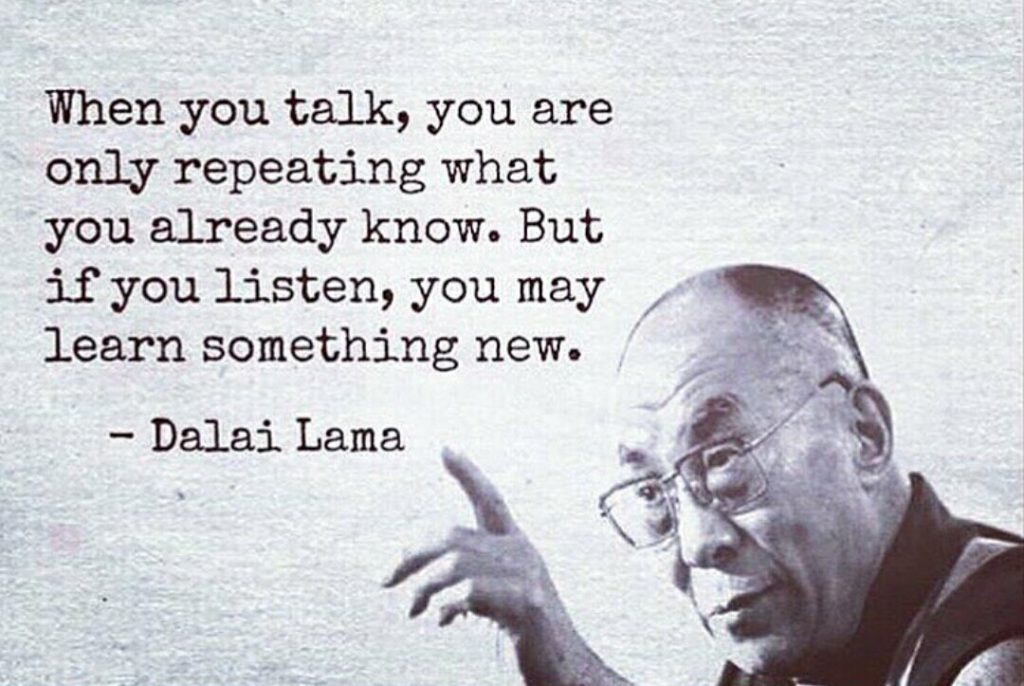The leader was once was a patriarchal person, an authority figure. There was a clear top-down hierarchy. You had the worker bees and their boss. Speaking out as a worker was an unwritten no-no, just like asking for a workers’ opinion. This leadership style was standard for a long time, from feudal times right into the industrial revolution up until very recently. Actually, this style is still quite common in certain industries and work cultures. Yet, at the same time, it’s quickly becoming history as the old industrial business model is dying. The top-down authority figure doesn’t fit in an era where innovation and creative thinking are core assets to stay ahead.
As a leader, it’s your job to get the most out of your team. The days where you would do this by just ordering an increase in productivity and pointing to a spreadsheet are thankfully over. It’s time to get humble.
Stop focusing on numbers so much
It’s counterproductive to become overly metric driven as a way to increase your performance. By focusing overly on control and KPI’s, you lose sight of the people. Hearing every week during a performance meeting that the numbers are down, to cut costs further and work more efficiently, is not the recipe for a motivated team. Instead of feeding your team the numbers, telling them what to do and breathing down their necks, start talking with your team and paying attention to them.
Be a leader, not a manager
When you talk to a team member, it’s not you who should be feeling empowered, but your employee. The inspirational speaker Alexander den Heijer once said:
“When I talk to a manager, I get the feeling that they are important. When I talk to a leader, I get the feeling that I am important.”
That’s what’s leading with humility is all about. Your employees are not human resources, only there to increase your bottom line. They’re human beings, and you should treat them like that.
It isn’t that hard, but sometimes we get too caught up in the daily stresses of leading a business and forget.
Ask questions instead of ordering

Source: Inspirational
Instead of telling people what to do to improve their performance and how to do it, ask them. Ask them how they think they can do a better job and what they need from you to achieve this. It’s deceptively simple and saves you much time looking for a solution, which probably would not be as effective as the solution of your employee anyway. Your employees usually know much better how to do their job and what they need for this than you. Remember this quote from the Dalai Lama, an expert in humility:
“When you talk, you are only repeating what you already know. But if you listen, you may learn something new.”
Act on information
When your people share their opinions on how to improve your business, act on this information. Even if you do not agree with a plan, explain to them why not. It shows respect and that you take them seriously. As a result, they will share more of their insights and get proactive in helping to grow your business.
You should not be the only one doing this. If you’re looking to improve your customer service, tell your team to involve the people who work daily with your customers. Be it the shop assistant, the call center operator or the newspaper delivery boy.
TIP: 7 ways to make change management a success in your company
Set the example and create a safe environment
If you want people to share their brilliant ideas with you, you need to foster a safe work environment. As a leader, you need to set the example and be the change. Always be respectful in your communication, show how to listen with sincere interest and without judgment. Even if a suggestion might not be taken on, compliment the effort.
To promote sharing, discuss some of your own mistakes and blunders. Show your people that everybody makes mistakes and that’s ok. It’s much more important to try out new things and to learn from the mistakes you made. By sharing errors with each other, everybody can gain from these, and, instead of repeating them, grow.
Furthermore, set up an environment which is conducive to trying out new ideas quickly. Experiment on a small scale and work with feedback loops to analyze successes and failures and to keep on improving and innovating.
Get down and dirty

Source: Unsplash
There’s a show called ‘Undercover Boss’, where the boss goes undercover and works like an employee in various areas of the business. The other employees don’t know it’s the boss but think it’s a new colleague. This way the boss learns more about the business and what’s going on with its employees.
You don’t need to dress up, just pay a surprise visit to your branches and work a few hours with your employees. It will bring great insights.
By working side by side with your people, it shows them that you value their work. That you’re not above cleaning floors, serving food, answering phones or dealing with a demanding customer. While you’re at it, serve your employees a delicious lunch or breakfast yourself, tell them how proud you are of them and start having an informal chat.
Discover what they love in their jobs and what’s going well, but also embolden them to tell what can be improved. By working, sitting and chatting together, you create a sincere human connection. That’s priceless. We can guarantee you that your employees will be more open, loyal and appreciative of you. You’ll see this reflected in their increased performance.
Be secure in yourself
Humility is not the same as being a pushover or passive. A real leader doesn’t need to emphasize his authority. He or she inspires and motivates others to do well.
Being humble as a leader is having the self-confidence to listen to new ideas, to respect the opinions of others, and not be afraid to admit you don’t know everything but are willing to find out.
As Joseph E. Rogers once said:
“A man who is at the top is a man who has the habit of getting to the bottom.”
Being a humble leader takes constant practice. Let us help you with this. We’ve successfully mentored CEOs and managers across organizations.
Contact us to further your personal and professional growth.

